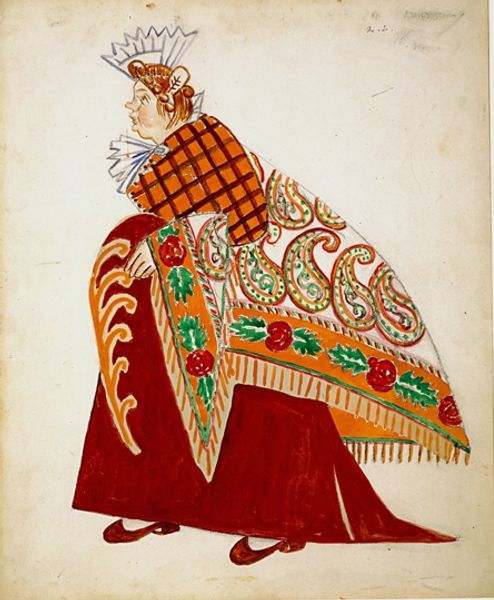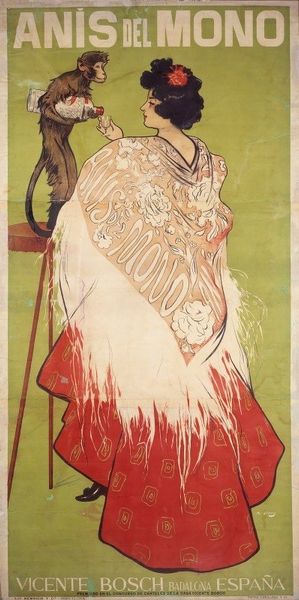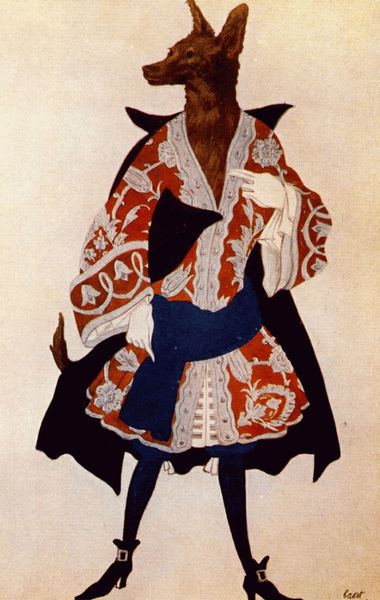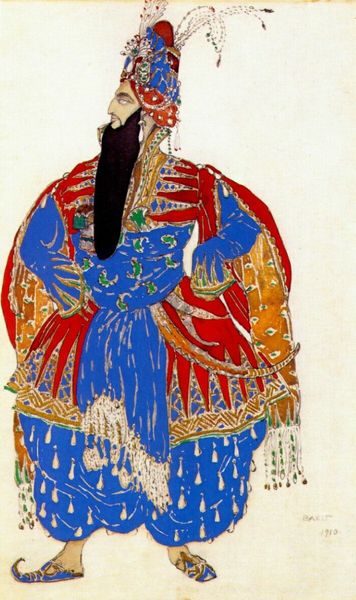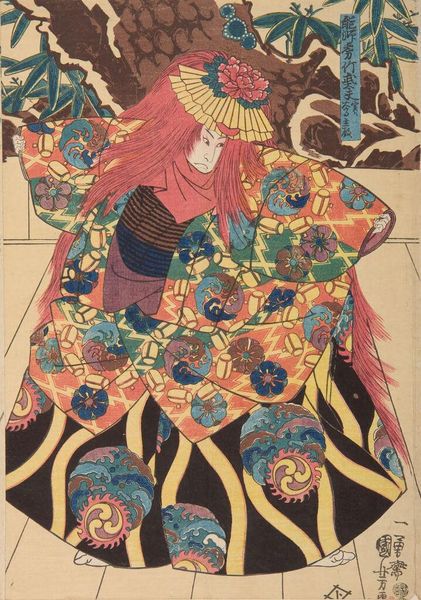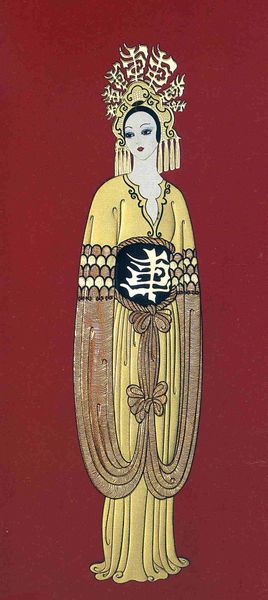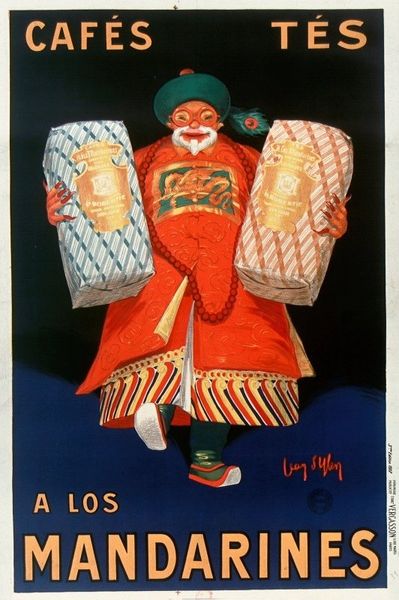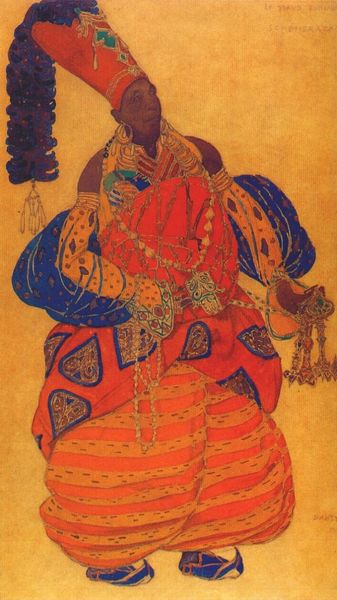
tempera, painting
portrait
tempera
painting
caricature
rayonism
figuration
costume
symbolism
russian-avant-garde
decorative-art
Copyright: Public domain US
Curator: Natalia Goncharova's tempera on paper, "Russian woman's costume from Le coq d'or," created in 1914, presents a rich tapestry of color and form. What strikes you most about this particular piece? Editor: Immediately, the boldness of the color grabs my attention. The juxtaposition of vibrant reds and yellows against the quieter blues is really exciting. And the repetition of forms! Curator: Goncharova, deeply invested in the Russian avant-garde, particularly her own Rayonism, uses the decorative costume design here to subtly engage in political commentary. Editor: Do you think the flatness of the picture plane emphasizes this symbolism by flattening hierarchies of subject and background? Curator: Absolutely, and if you also see her exploration of peasant identity, Goncharova’s positioning of Russian folk themes destabilizes pre-existing expectations of gender roles, particularly on stage. It challenges the dominant, patriarchal narratives prevalent in opera and ballet. Editor: The floral patterns, though, seem less radical and more about playing with visual textures. The semiotics of shape—ovals, petals, and swirls—suggest growth, abundance. Curator: Those visual textures tie into Russian folk art. Goncharova aimed to legitimize that history, celebrating it when social realism was fast approaching. Editor: And look at how those shapes interplay: the yellows popping against the reds; how negative space is considered almost as intentionally as positive. It gives a kinetic feel. Curator: Precisely. In examining costume as cultural armor, Goncharova offers us insight into not just early 20th century stage design, but a wider commentary on tradition. Editor: Thinking purely visually, I appreciate how Goncharova orchestrates a harmonious relationship between form and function—even within just a design. Curator: It's a powerful example of how art, even in decorative forms, can hold layers of socio-political meaning and become something far more profound.
Comments
No comments
Be the first to comment and join the conversation on the ultimate creative platform.
